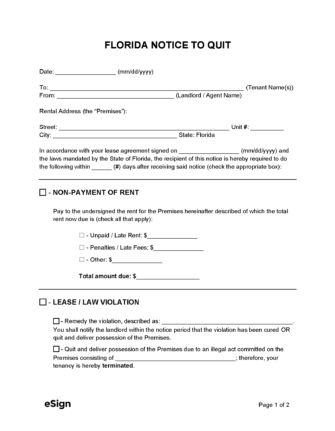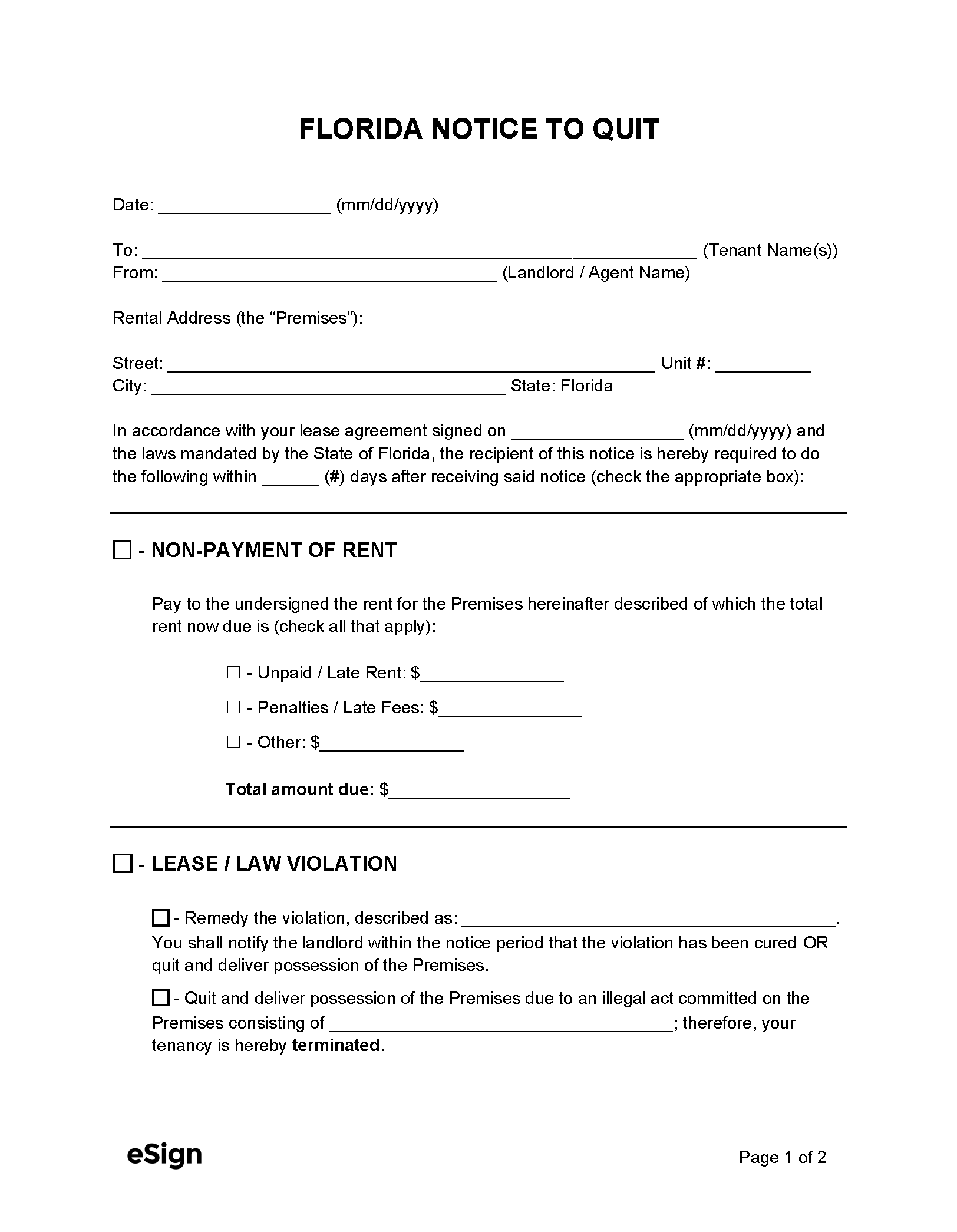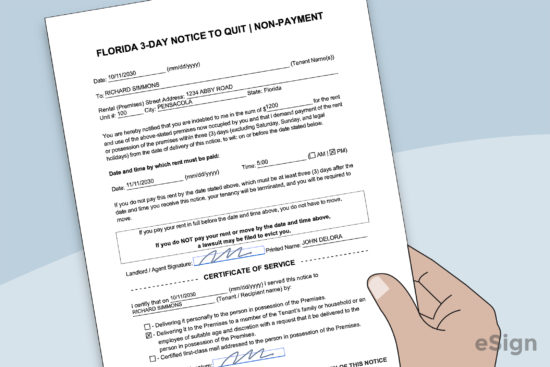Eviction Notices: By Type (3)
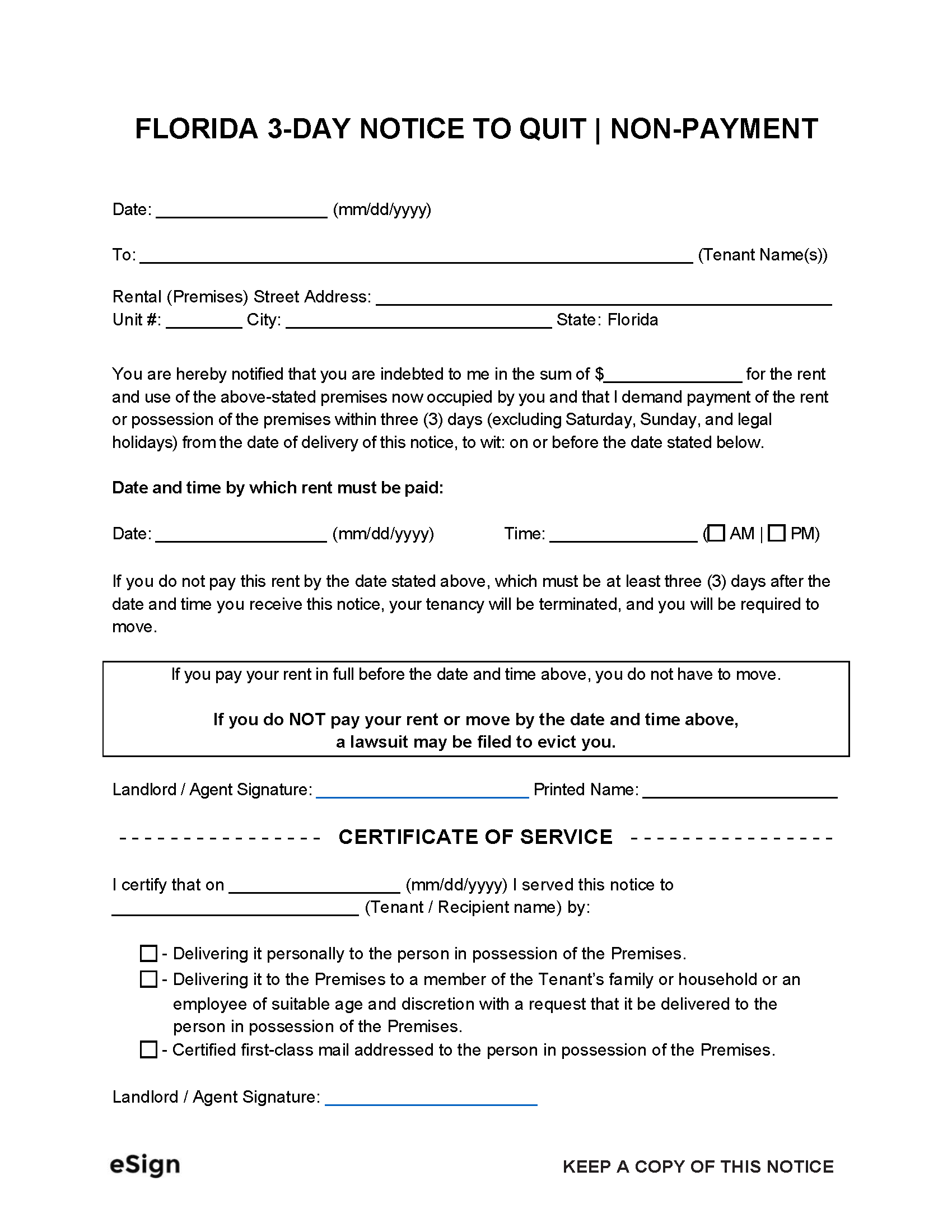
3-Day Notice to Quit | Non-Payment – Notifies a tenant that they are in default of their rent payment and must pay or quit the property. Download: PDF, Word (.docx), OpenDocument
|
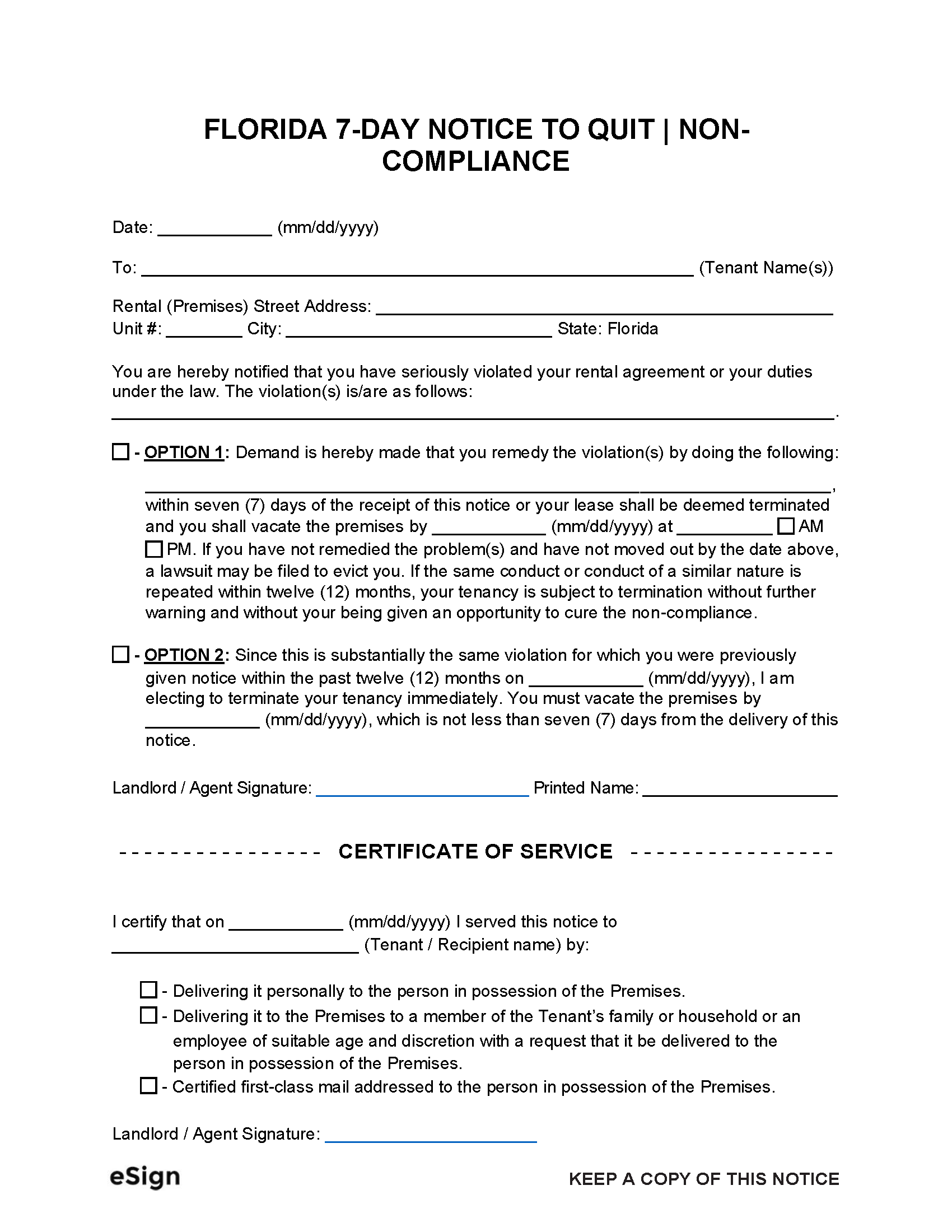 7-Day Notice to Quit | Non-Compliance – Informs a tenant that they have violated their lease (other than non-payment) and, depending on the severity, they may or may not have the option to remedy the issue. 7-Day Notice to Quit | Non-Compliance – Informs a tenant that they have violated their lease (other than non-payment) and, depending on the severity, they may or may not have the option to remedy the issue.
Download: PDF, Word (.docx), OpenDocument |
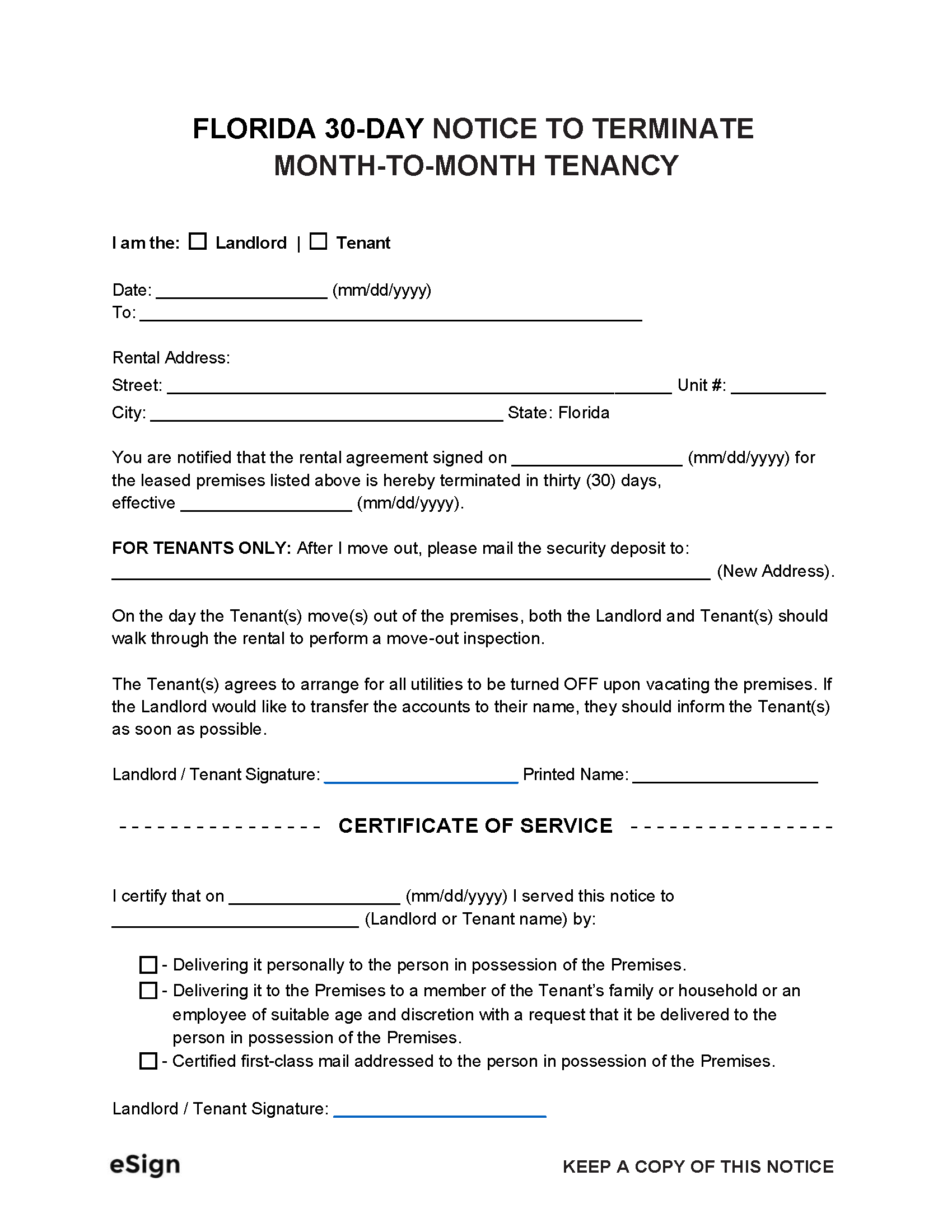 30-Day Notice to Terminate | Month-to-Month Lease – Terminates a month-to-month lease agreement between a tenant and landlord without cause. 30-Day Notice to Terminate | Month-to-Month Lease – Terminates a month-to-month lease agreement between a tenant and landlord without cause.
Download: PDF, Word (.docx), OpenDocument |
Notice Requirements
How to Evict a Tenant in Florida
Step 1 – Serve Notice
Before a landlord can proceed with an eviction suit, they must notify the tenant that they have violated their lease agreement and must vacate the premises or, if the circumstances allow, remedy the breach.
Step 2 – Summons and Complaint

If the tenant doesn’t comply with the demands of the notice form, the landlord can file an eviction suit. First, they must download and complete the following forms:
- Civil Cover Sheet (Form 1.997)
- Complaint (choose one):
- Summons – Eviction Claim (Form 7)
- Summons – Damages Claim (Form 8) (If complaint involves damages)
The landlord must file all documents, along with a copy of the notice to quit and the lease agreement, with the court clerk in the county where the property is located.
Step 3 – Serve Papers
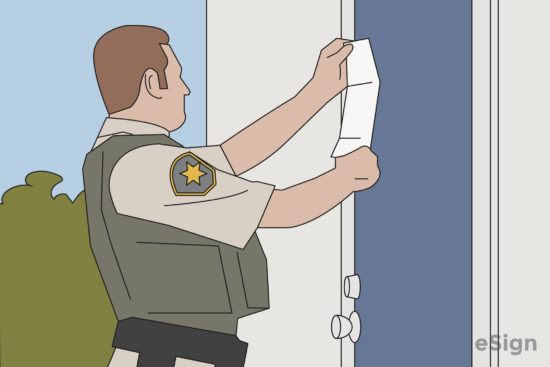
Step 4 – Tenant’s Response

Once the papers have been served, the tenant has 5 days to file a response to the complaint for general eviction and 20 days if the complaint is for unpaid rent or damages.
If the tenant files a response in time, a hearing date will be set (Step 5).
If the tenant does not file any defenses against the eviction complaint, the landlord can file for default judgment.
- General Eviction:
Step 5 – Hearing (If Applicable)
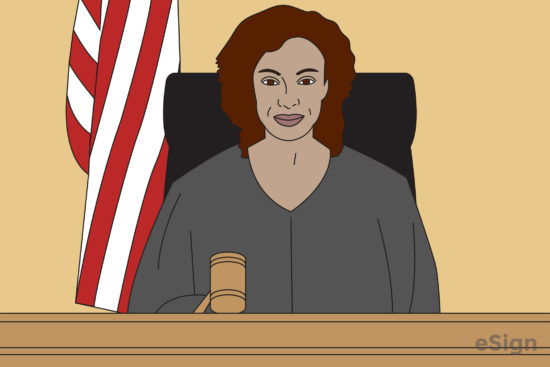
Step 6 – Judgment
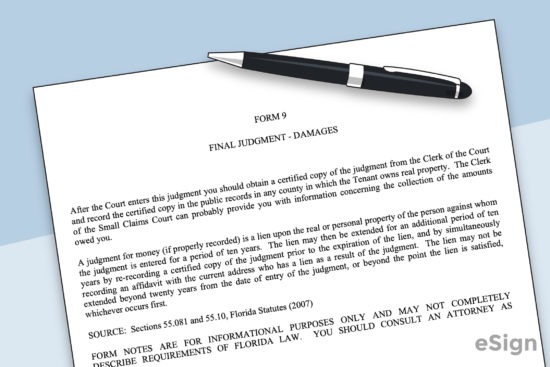
Step 7 – Writ of Possession (If Applicable)
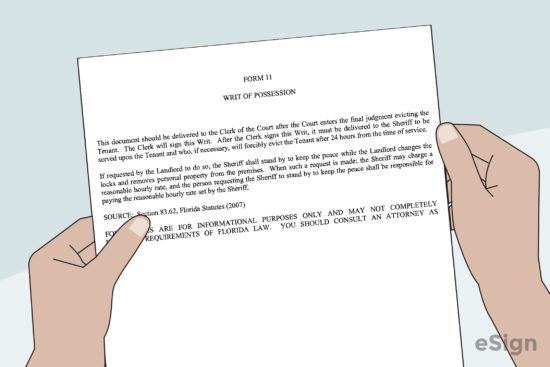
Court Forms + Resources
Forms
- Civil Cover Sheet (Form 1.997)
- Signed by: Landlord or Attorney
- Complaint for Eviction (Form 5)
- Signed by: Landlord
- Complaint for Eviction for Failure to Pay Rent (Form 5a)
- Signed by: Landlord
- Complaint for Eviction for Failure to Comply with Lease Other than Non-Payment (Form 6)
- Signed by: Landlord
- Summons – Eviction Claim (Form 7)
- Signed by: Court Clerk
- Summons – Damages Claim (Form 8)
- Signed by: Court Clerk
- Nonmilitary Affidavit (Form 81)
- Signed by: Affiant and Notary Public
- Motion for Clerk’s Default (Form 76)
- Signed by: Landlord and Court Clerk
- Motion for Clerk’s Default – Damages (Form 77)
- Signed by: Landlord and Court Clerk
- Motion for Default Final Judgment (Form 78)
- Signed by: Landlord
- Motion for Default Final Judgment (Form 79)
- Signed by: Landlord
- Final Judgment – Eviction (Form 66)
- Signed by: Judge
- Final Judgment – Damages (Form 9)
- Signed by: Judge
- Writ of Possession (Form 11)
- Signed by: Court Clerk
Resources
